(Written by Linus Bohman)
Greeble, greeb or greebling are words not recognized by most dictionaries. According to Wikipedia (see link), the earliest recorded use of the term greeble found to date was by those working on the special effects for Star Wars – the group who would later become Industrial Light and Magic. They also described this design method as “guts on the outside”. Within the LEGO community the earliest written reference can be found in the greeble design commentary on Lugnet: “Greeble (also greeblie or greeb) is the popular term to describe groupings of mechanical-looking detail elements in LEGO MOCs.” Greebling also appears in official LEGO sets, like in the #10221 LEGO Star Wars Super Star Destroyer pictures below.
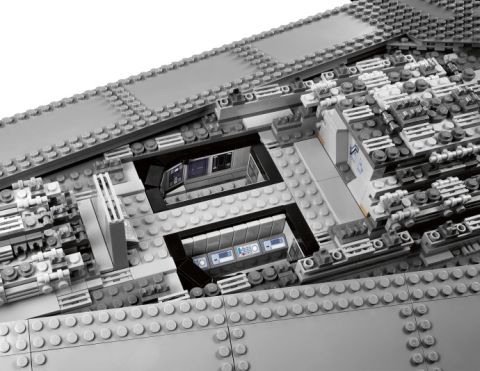
Essentially, greebling is detailing that helps to give a LEGO model a believable and interesting appearance, while working together with the color-scheme and shape of the MOC. This can includes things like; clusters of mechanical looking elements on the side of a ship, brick-built guns and engine areas, and brick-built cockpits and controls. In this article we will discuss the basics of greebling with LEGO, so read on.
GREEBLING WITH LEGO – WHERE TO GREEBLE?
Greebling with LEGO is a subject with very few set conventions. Basically as long as the greebled area looks good in context, feel free to do the greeble-dance. But what does it take for a greebled area to look good in context?
Basically, the greebles should look like they are functional, and sit in a logical place for that function. As an obvious and slightly far-fetched example, consider LEGO mosaics: are they usually greebled? Most often, no. Why not? Because it would look odd – the detailing would have no real purpose beside looking cool, and they would appear out of place. The same goes for putting greebles on all other MOCs – without purpose, they are just cool detailing that probably appear odd to the functional minded human eye.
Below are some examples of what I consider good greebling techniques. Some are the traditional kind, others not – but they all have in common that they are LEGO brick-built detailing (click images for larger view).
We greeble to break up boring areas. This is probably the kind of greebling most people think about when they hear the word.
We greeble the bottom of ships to avoid the boring plate-bottom look.
We greeble areas where the craft changes shape in order to get smooth(er) transitions.
We detail cockpits in order to make them look more interesting and appear to have more realistic controls (instead of pre-made seats and printed elements for controls).
We greeble thruster areas for a visually unique look.
We seem to dislike pre-molded one piece guns (mainly Star Wars shooters) and build our own.
We furthermore greeble areas around landing gears to make them look more technical.
And we also tend to build our own equipment to use as detailing.
GREEBLING WITH LEGO – LAYOUT
The next question would be is what is the best way to arrange greebles for the best look? This of course would be mainly dictated by the LEGO model’s form and function, but there are some general good practices we can follow as guidelines. Below are some examples.
The first consideration is density. How intense should the greeble-cluster be? A lot of greebles, or fewer? Both can look good, and what one want is dependent on the situation (left = lot, right = less).
Furthermore, do one want greebles to be symmetrical (left), or asymmetrical (middle)? Or perhaps a little bit of both (right)?
In order to make greebles look organized, one can also use bigger eye-catching pieces combined with smaller ones for support.
One can also have greebles interact with the context they are in. For example they can be recessed (top), having the same height as the surrounding area, or they can be partially hidden (bottom).
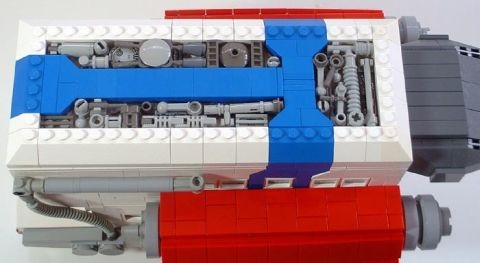
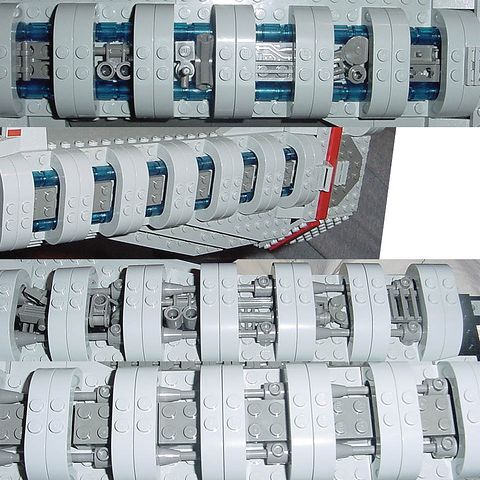
And last but certainly not least, one can design the greebled area to have flow. I personally find this very important, as the greebled areas tend to look like a cluster of small individual pieces (instead of a working, mechanical whole) if they do not interact properly.
GREEBLING WITH LEGO – COLORS
When it comes to greeble color, gray and dark-gray are definitely the most dominant ones used by LEGO fans. And there is nothing strange about this, as grays easily reminds us of mechanical elements made of metal. But of course you can experiment with other colors. It has certainly been done before, and I have seen some interesting results. The important thing is that the greeble color should work well with the general color-scheme of the MOC.
One can also achieve great effects with highlights in another color.
GREEBLING WITH LEGO – PIECES TO USE
So which LEGO elements are the best for greebling? This is an area that really seems to bring out the creativity in people – basically, anything goes! There does, however, seem to be a pull towards smaller pieces. In general, a bunch of smaller pieces seem to give a more mechanical look than fewer large ones. Below are a few examples of piece categories that can be used for greebling.
As mentioned, smaller pieces usually make up for most greebling. When repeated, they can also create interesting patterns (look at the sides of the engine-pods on the second example).
Round elements are also popular. This is probably due to the fact that they contrast with the generally square bricks we build with (which is also a reason as to why many people seem to gravitate towards non-square designs in general).
Parts from the minifigs domain can also be useful when greebling; both minifigs tools and the severed limbs have great potential. (Look for minifig crotches near the bottom on the second example.)
LEGO Technic pieces have become quite common when greebling. Especially gears are used, but they are not the only ones.
Plates, both regular and modified, can also be used for greebling, However they often require to be used in a unique context, because they are usually already common elements in a MOC. While this technique is difficult to do well, it can be done with great effect, so don’t forget to give it a try!
And lastly, LEGO tiles – an area that I personally find highly interesting. They have been used quite often as regular detailing; for example as grilles (on the left), and regular tiles to create textural differences (on the right).
Regular tiles have also begun to appear as greebles in a different way. Here the general shapes are used to give the impression of structures, achieved with layers. This has been explored in a MOC by Daniel Rubin, and also in two greeble studies by Luke Becker (see reference links below). I find this a very interesting form of greebling that deserves attention. Especially the two studies hints at untapped potential.
GREEBLING WITH LEGO – KEY LESSONS
Despite being such an amazingly free area where ones creativity really can run wild, there are a few things you should avoid when greebling. Most of these we mentioned before, but let us do a rundown on them again.
Avoid tacked on greebling. This can be due to the details not fitting well into context or the bits looking like separate pieces. To avoid this, check the color-scheme, greeble density and greeble flow. Having grey greebles on a grey background makes them look more intense compared to grey greebles on another color. Also remember not to make greebling a purpose in itself – just greeble enough. Not more, not less. Also remember that greebles are not necessary to make a great MOC, as these three excellent models show.
Greebles are essentially fantasy-elements – in the real world, spaceships would unlikely have mechanical elements exposed to radiation, weapon fire and whatnot. Instead of looking at this as an obstacle, use it to your advantage: you really can make the details look any way you wish! And, finally, remember that you can disregard anything said in this article. They are merely observations – experimentation is king. Happy greebling!
REFERENCES & FURTHER READING
- Space design commentary on Lugnet
- Wikipedia definition of greeble
- Greeble studies: in Classic Space flickr group, in Classic Space forum archive, short summary in Classic Space forum archive
- Detailing category in Swooshable’s Building School
- Quick examples of what to do with turntable tops
- All of the pictures used in this article
REFERENCES – LEGO CREATIONS (MOCS)
- Becker, Luke: Greeble Study 1, Greeble Study 2
- Blocksidge, Kevin: Union J.A.C
- Bohman, Linus: Greeble Study, Gun Idea, S.I.E.G.E Tank, Swamp Thing, Verner Veinbaum’s Vickedly Vonderful Vheel-Machine
- Bugge, Niels: Bubblecraft 2, Greeble study, Longship, Z-fighter
- Catsy: Avery AAF 212 Hornet Starfighter
- Citrin, Charlie: Space Trailer
- Crowley, Mike: Jetpack
- Cybris: Autonomous Strike Drone
- Dean, Nick: 42nd Club, Hovering Light Post, The Sofia
- Giddens, Chris: Denarius, PCS Hop-B.A.T
- Goldman, Keith: The Ghoul
- Gould, Timothy: Taipan, Ute
- Hafner, Tony: Nebula III
- Hofman, Leonard: Rocketship Awesome
- Hofman, Dean: Mercenary Gunboat
- Turkguy19: White Eagle Orbital Hotel and Casino
- Jerac: Beholder Engineering Droid, Flying Machine, Monostomper
- Jassim, Daniel: Nasal Avenger 3
- Keppler, Kyle: Engine Detail from a SHIP-WIP
- Lambrecht, Bram: F-38 Impulse, Lamborghini Renazzo
- Larsson, Joel: Ceasar Container Shuttle Craft, Greeble Study
- Jastermereel: WIP AT-AT
- McGrath, Chris: Greeble Study
- Neonbug: Lamestar 2
- Moko: Space Fighter
- Morris, Jared: Ice Planet Defense Fighter
- Proudlove, Nathan: Moderne
- Pruden, Trevor: Vaygr Class Minelayer Corvette
- Rice, Danny: Bridge from WIP-SHIP
- Rignault, Jean-Pascal: Small, Red and Fast
- Roberts, Soren: Various bits from other-folder
- Rubin, Daniel: Enola Gray
- Sandlin, Mark: Taurus, The Whitestar
- Stafford, Mark: Crysilon Louise
- Vaughn, Justin: Crater Express, Garbage Disposal Endcap, Greeble Study
- Walker, Jon: XB-202a Stealth Revision
- Whittenburg, Jason: December
- Wood, Ryan: Greeble Study mk2



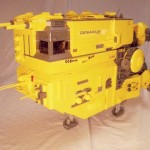
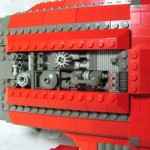
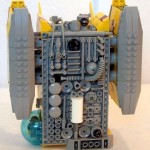

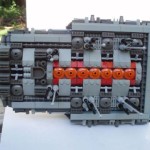
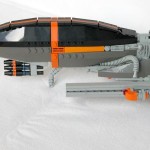
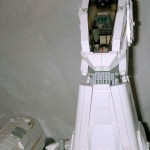
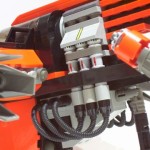
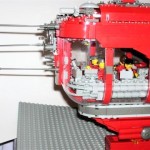
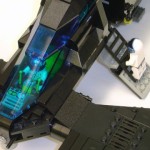
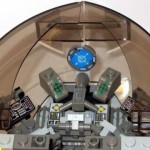
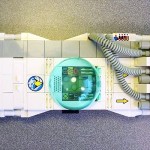
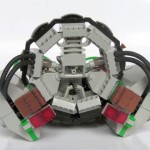
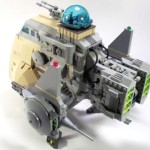
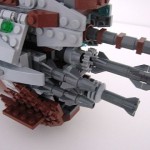
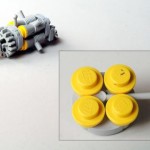
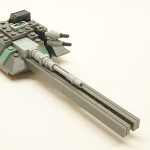
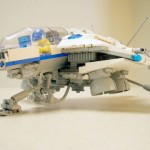
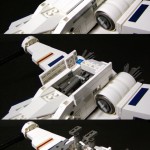
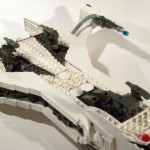
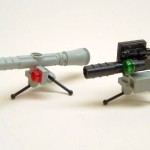
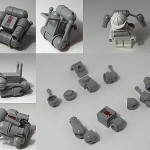

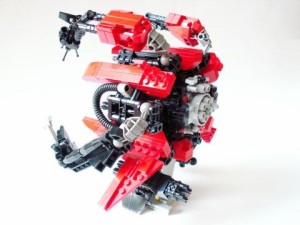

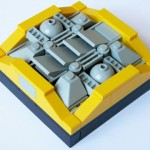
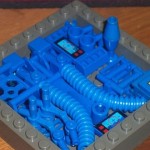
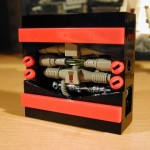
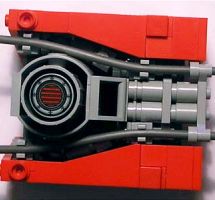
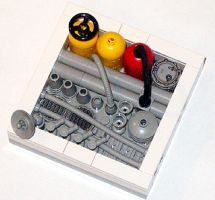
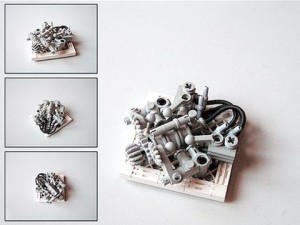
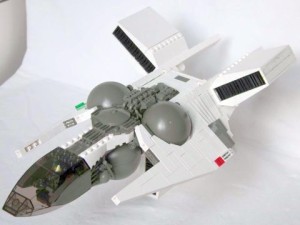
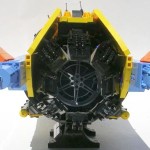
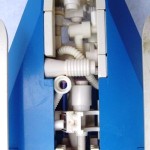
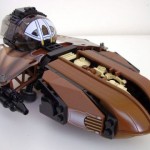
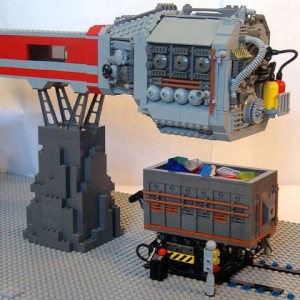
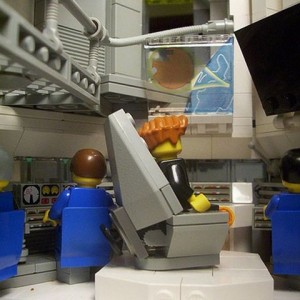

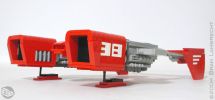
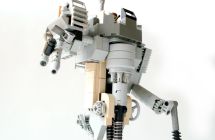
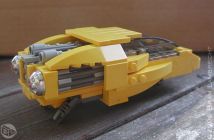
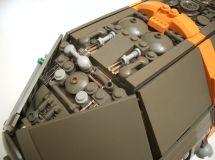
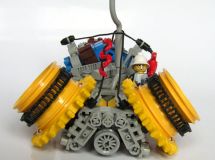
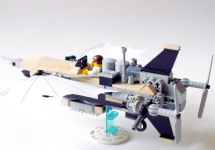

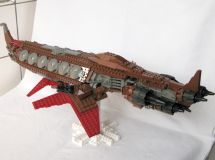


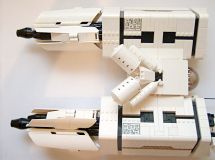
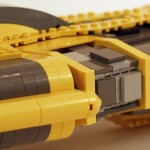

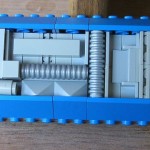
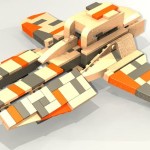
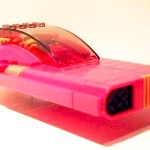











WOW, this article is quite helpfull. Time to pull out my pieces and build something…again 😛
A lot of useful tips in this article…. I’ve tried greebling before, when I built a kind of exo-suit (the idea came from the real Exo-suit), but for some reason I’ve never had much luck with the technique. Maybe because I lack the good pieces, or I’m just doing it wrong. Another problem is that my MOCs tend to not need greebling, or that I smooth everything so that there’s nowhere to apply it. Looks like I need to try it again on my next MOC. Great article! 🙂
Also, off-topic: http://brickset.com/article/15935/cmf-series-14-collector-sheet-found This series is very cool, although the zombies look boring. 😕 Really like the Specter and Plant guy, and the gargoyle. 😀
Greebling is one of my favorite techniques and I have studied it myself extensively. I actually have a greeble box, with parts that are useful for greebling. I found that using only one color helps significantly. Also less is often more. Since you mentioned you tend to smooth out your MOCs, just adding a little exposed greebling can make a big difference.
Yeah, I saw the Series 14 image. Looks awesome! I’m wondering about the hair-piece of that female ghost through. It looks trans-black, or something.
Yeah, I’m going to have to work on greebling more often. Also my spell-checker keeps trying to correct “greebling” to “grueling,” which is becoming very annoying. 😉
Do you mean the Banshee? I was wondering about her hair as well. I would say it’s plain black, but the white outline dispels that, as no other black pieces are outlined that way in the image. If it is a new mold, the hair may be transparent, and the black is just the background showing through. That would be neat.
Yeah, that’s the one I was talking about. I was also comparing to other black hairpieces in the series and it just looks different. Well, greebling can be kind of grueling, so your spell-checked may be right. 🙄
Spaceships unlikely to have mechanical elements exposed to weapon fire? Oh, you were talking about in the real world.
And concealing the mechanicals would protect against radiation? I’m sure you were talking about the real world there as well. If not, whoops! I don’t know what I’m talking about either.
But, great article.
I’m not a space engineer but to me it makes sense what Linus says; protecting machinery as much as possible from harsh elements. By the way, this article has an interesting history. It was originally published by Linus in 2006 on a now defunct website, so we had to salvage it from the Wayback Machine. He asked me to republish it for him so it doesn’t get lost. This is why the MOCs you see are quite old. 🙂
Great post! Lots of great pictures too!
another great Grebble LEGO example is the LEGO Ideas EXO Suit
Oscar, yes. This is an old article that was saved and republished from a now defunct website. I’m planning to write an article myself with more recent examples. 🙂
Is this still happening/already happened? I would love to see your updated article! This should be required reeding for any AFOL space fan 🙂
Not yet, as I have been writing about other stuff, but it is still definitely on my shortlist.
I found this article very interesting! Very in-depth, too. 😀 Hopefully I have enough cool tiny pieces to make some greebling on my next MOC (currently trying to figure out how to build the wheels on this 4×4 type thing).
Thanks for giving my old article a new home! It’s good to see it in the wild again. Glad people like it and found it helpful, still 🙂
Linus, you are very welcome. It is a great article and was definitely worth saving. 🙂
Very comprehensive and detailed, nice examples too. I’ve done greebling on a lot of my stuff but I’m not hardcore as far as it’s concerned. I love it on the sides of spaceships 🙂 .
This is a great article! I will take some notes 🙂
Thank you for this article! These are beautiful examples. Here is one more:
https://www.etsy.com/shop/AutotelicStudio